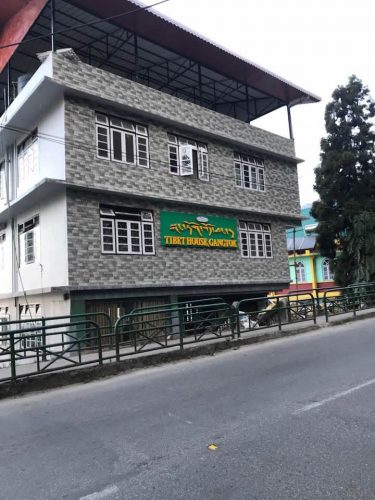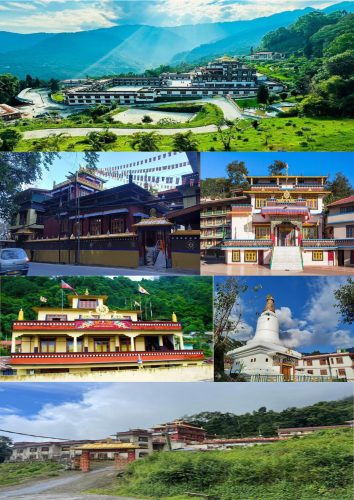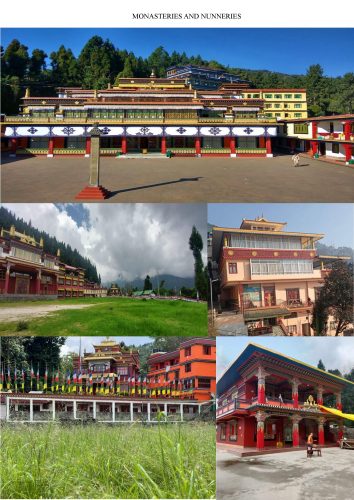Settlement Officer / Representative:
The Settlement Officer, appointed by the Central Tibetan Administration (CTA), Dharamsala, serves as the overall in-charge of the settlement. Acting as a liaison, the Settlement Officer facilitates communication and coordination between the CTA, State and Central government agencies. He is also responsible for maintaining excellent relationship with project donors, sponsors and other relevant national and international agencies who show interest in Tibetan community under TSO Gangtok.
Under the Settlement Officer’s leadership, each of the 41 towns and villages within TSO Gangtok’s jurisdiction is represented by an elected leader (Me-thue). In this cluster settlement model, the Me-thues play a vital role in keeping the TSO informed about local developments and needs. Apart from conveying the needs of the people within their respective areas, another crucial responsibility of these leaders is to disseminate information and announcements about CTA schemes (through TSO Gangtok), particularly regarding the organization of prayers, scholarships, health awareness programs, and other initiatives, to the people of their respective areas for their participation and to take benefits according to their needs.
Most of the important projects are implemented in collaboration with the respective town or village leaders (Me-thues) to ensure effective planning and execution. The Settlement Officer makes all major decisions in consultation with these leaders, serving as a crucial link between the settlement office and the community.
CTA affiliated organisations:
Local Tibetan Assembly, Gangtok
The Local Tibetan Assembly (LTA) of Gangtok is a democratically elected body representing the Tibetan refugee community under the jurisdiction of TSO Gangtok. It collaborates with the TSO to address settlers’ concerns, has the responsibility to either approve or disapprove the annual and revised budgets of TSO Gangtok, and it ensures effective implementation of CTA policies by the TSO. The LTA meets twice a year, fostering grassroots governance and community participation.
Regional Tibetan Freedom Movement, Gangtok
In Gangtok, the Regional Tibetan Freedom Movement works closely with the Tibetan Settlement Office to advocate for Tibetan cause and support the local refugee community. They actively assist the TSO in promoting Green Book contributions, and organizing awareness programs wherever necessary.
Non-Governmental Regional Tibetan Associations, Gangtok:
Regional Tibetan Youth Congress (RTYC)
Regional Tibetan Women’s Association (RTWA)
Regional Do-Toe Association, Gangtok
Regional Do-med Association, Gangtok
Regional U-tsang Association, Gangtok
SUNDAY TIBETAN LANGUAGE CLASS:
In 2016, the Regional Tibetan Youth Congress (RTYC), Gangtok, took a significant initiative to establish a Sunday Tibetan Language School for children in the Tibetan community who were deprived of the opportunity to learn their mother tongue. This effort was driven by a pressing need arising from the closure of a Tibetan school in Gangtok due to land subsidence, which posed a threat to the safety and security of its students and staff. The closure compelled many Tibetan parents to enroll their children in local English-medium schools, where Tibetan language education was unavailable.
The RTYC’s initiative was further inspired by a profound message delivered by His Holiness the Dalai Lama that same year, emphasizing the critical importance of preserving, learning, and promoting the Tibetan language as a cornerstone of Tibetan identity and culture. Recognizing the urgency of this call, RTYC Gangtok acted swiftly to provide a platform for Tibetan children to reconnect with their linguistic and cultural roots.
The Sunday Tibetan Language School in Gangtok has since become a vital institution, offering classes in Tibetan script, grammar, reading, and writing. Beyond language instruction, the school fosters an environment where Tibetan children can engage with their rich cultural heritage, learn traditional values, and build a strong sense of community.
This initiative is a testament to the resilience and commitment of the Tibetan community in Gangtok to uphold their identity amidst challenges. It also serves as a model for similar efforts worldwide, ensuring that the Tibetan language and culture continue to thrive for generations to come.
All teachers are volunteers, most of them trained and experienced former school teachers.
Present strength: 40 students with 4 teachers.
Funding: INR. 25,000/- Per Year by LTDM, France.
VEROCHANA BUDDHIST TEACHING CLASSES:
The Regional Tibetan Youth Congress (RTYC), Gangtok, took a noble initiative to promote Buddhist teachings and philosophy through the Verochana Buddhist Teaching Classes, held 4 times a month at Sera Jey Monastery, Chandmari. These sessions, led by the esteemed Gen. Jampa la, are open to all Buddhists, regardless of nationality, fostering a spirit of inclusivity and shared spiritual growth.
Under Gen. Jampa la’s guidance, attendees delve into the profound teachings of Buddhist philosophy, gaining insights into mindfulness, compassion, and the path to enlightenment. The classes provide a platform for both beginners and seasoned practitioners to deepen their understanding of the Dharma in a supportive and serene environment.
This initiative not only strengthens individual spiritual practices but also builds a sense of unity among Buddhists from diverse backgrounds, reflecting the universal values of Buddhism. The RTYC Gangtok’s effort to organize these teachings is a meaningful contribution to preserving and spreading the timeless wisdom of the Buddha.
Funding: INR. 25,000/- Per Year by LTDM, France.
HOW TO REACH GANGTOK:
By Flight / Helicopter:
- Pakyong Airport in Pakyong, East Sikkim (32 kilometres)
- Bagdogra Airport in Siliguri, West Bengal (123 kilometres)
By Train:
- New Jalpaiguri Railway Station, Jalpaiguri, West Bengal (118 kilometres)
By Bus / Taxi:
- SNT Terminus, Siliguri, West Bengal. (111 kilometres)



